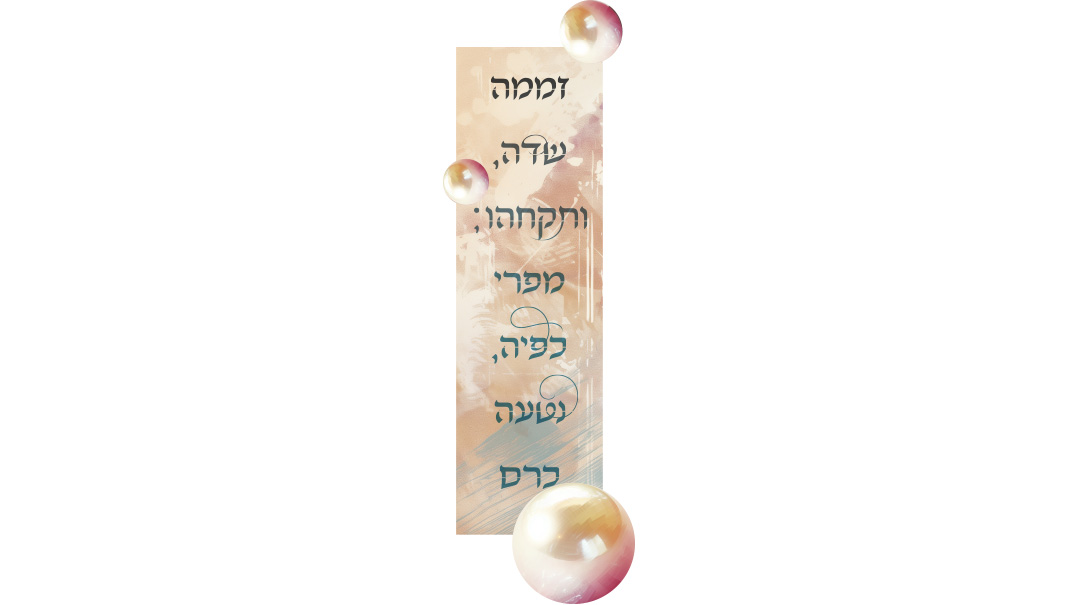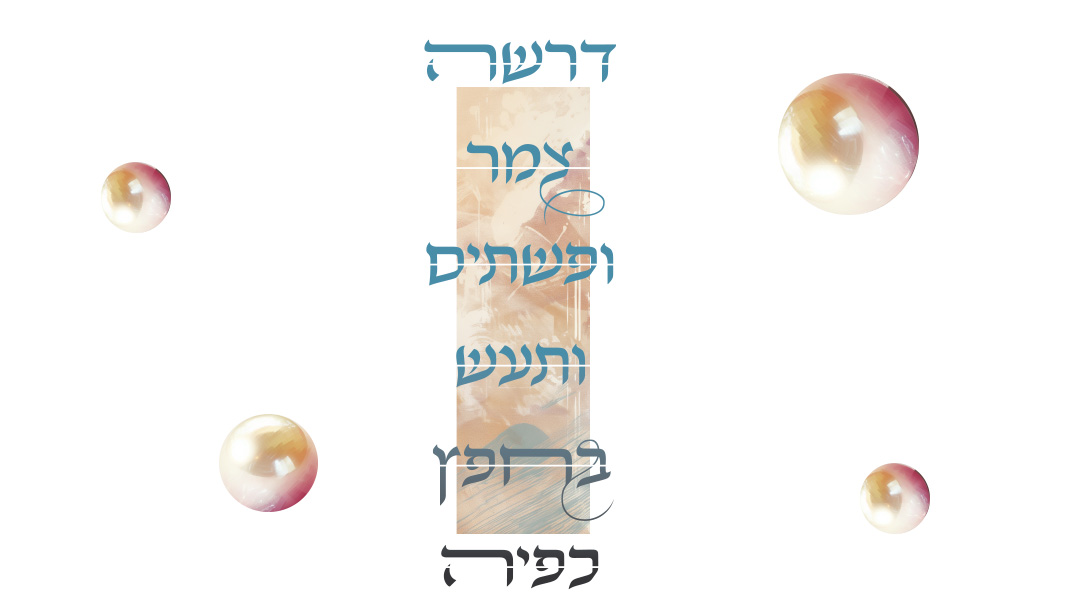The Qualities of Miriam
| February 18, 2025When we know our internal worth, we can see the true source

The Qualities of Miriam
Rebbetzin Shira Smiles
The Midrash tell us this describes Miriam Haneviah. As a young girl, Miriam had a prophecy that her mother would bear the redeemer of Am Yisrael. After Moshe Rabbeinu was born and the situation in Egypt became worse, her father, Amram, scolded her, asking, “Where is the realization of your prophecy? The people are still suffering so terribly!” Miriam was “misametzes,” she stood firm in her belief in redemption.
The Kli Yakar sees this quality expressed throughout the Torah’s portrayal of Miriam. Working with her mother as a midwife, Miriam was commanded to kill all the newborn Jewish boys. Not only did Miriam keep the babies alive, she cooed at and coddled the babies, encouraging them to thrive, fully believing they would grow up in a better future. She remained unwavering in her confidence that Hashem had not forgotten His people.
Once Moshe was born, Miriam continued to believe in her nevuah, even as she stood at the riverbank watching to see what would happen to her baby brother. Rav Elya Meir Bloch ztz”l in Peninei Da’as explains that Miriam was absolutely sure that a miracle would happen. This was the quality that inspired Miriam to call the women to join her with musical instruments and celebrate the miracle of Kri’as Yam Suf. Notes Rav Bloch, Miriam instilled this middah — to never despair of salvation even in the most precarious of situations — in Jewish women for all time.
Rav Zalman Sorotzkin, in Oznayim L’Torah, adds that we can look at the verb used to describe Miriam at the bank of the Nile to further understand her greatness. “Vateisatzav achoso meirachok l’deiah mah yei’aseh lo — his sister stood from afar, to know what would be done to him.” (Shemos 2:4) “Yetzivus” connotes steadfastness.
Rav Shmuel Rosovsky ztz”l, in Zichron Shmuel, notes that Miriam stood meirachok, from afar, in the sense that even if seemed “far-fetched” that Moshe would be saved, she believed it would be so.
It was for this that she was later rewarded. Am Yisrael didn’t travel until Miriam’s quarantine for tzaraas was over, notes Rav Chaim Shaul Kaufman ztz”l in Mishchas Shemen. She held on to the Divine message; likewise, Hashem ensured that His Presence would not move until she was completely healed.
Rebbetzin Shira Smiles is a lecturer in the Yerushalayim area, and a mechaneches in Darchei Binah Seminary. She is the author of Torah Tapestries, which includes extensive essays on each parshah, and Arise and Aspire on birchos hashachar.
Spiritual Workout
Mrs. Shira Hochheimer
How does a physical therapist or fitness trainer get a person’s balance to improve? They work on strengthening the core muscles. A person’s ability to stand tall comes not from his legs, but from the mosnayim, the waist area.
The eishes chayil wraps her mosnayim with oz, with strength. The Yalkut Shimoni says that this oz comes from the Torah. Because when a person knows their decisions are Torah-true, they can do remarkable things.
The sefer Yashresh Yaakov says that the source of her oz is her emunah. When a person believes in Hashem, it gives them strength in hard times. Rachel Polin-Goldberg, mother of hostage Hirsh Polin-Goldberg z”l, said in January 2025, “I have felt that Hashem is with me during this most challenging, to put it mildly, of times.” She was able to turn the world over in her fight for her son’s return from the strength of that emunah.
How do we keep our emunah strong?
The end of the pasuk tells us “Va’te’ameitz zero’oseha. She strengthens her limbs.” She exercises her muscles. In this case, says the Yashresh Yaakov, the two muscles she exercises are yirah and ahavah, her awe for and love of Hashem.
We strengthen our yiras Shamayim, says the sefer Or Yisrael, by learning mussar. I joined an organization called Hachzek, which encourages daily mussar learning. Their tagline is: Daily. Mussar. Impact. The journey to becoming our best selves. They have a calendar that divides up mussar seforim into sections for daily study and have short audio and written shiurim on that day’s section.
To grow our ahavas Hashem the Ohr HaChaim suggests imagining a dying and childless pauper whom a navi prophesizes will be cured, will inherit a fortune, and will have a child. When cured, he would overflow with love of Hashem.
For most of us, some or even all of these gifts are our daily reality. We have full stomachs, we’re alive and well, and we’ve been blessed with families. Yet we’re not overwhelmed with love of Hashem. When we feel disconnected from Him, we can focus on enjoying the gifts He has given as a way to feel more ahavah for Him.
Learning mussar daily and appreciating the gifts we’ve been given may seem like daunting spiritual workouts, but they’re a great way to develop our spiritual strength.
Question: For what three things am I grateful that Hashem has given me?
Mrs. Shira Hochheimer is the author of Eishes Chayil: Ancient Wisdom for Women of Today, a presenter for Torat Imecha Nach Yomi, and an administrator for WITS in Baltimore, MD.
Her Real Worth
Rebbetzin Debbie Greenblatt
ASwe follow the flow of the pesukim, we see a woman who is industrious — whether in her home or outside of her home — and accomplished.
Accomplishment brings its own challenge. As our hishtadlus bears fruit, we feel capable and successful — great motivators for continued accomplishment. But we don’t want to forget that it’s Hashem Who’s the Source of our success. To prevent that, we gird ourselves with oz, a metaphor for Torah.
The Tanya, referring to our pasuk, teaches that learning Torah strengthens our spiritual mosnayim, our core — which he explains is our emunah in the Oneness of Hashem, that He both causes and fills all worlds, and that there is no space empty of Him. Learning Torah refers to not just the parts we’d think strengthens our emunah, like the penimiyus of Torah, but also the parts we need to know to function properly as Jews, like halachah, which are the foundation of our observance.
There are those who see the pasuk as a reference to modesty, as the eishes chayil wraps herself with oz. Tzniyus is a way of looking at ourselves and the world through the lens of our true identity, that internal and essential self that will remain even after the body is no longer. The more we identify with our internal qualities, the more the behaviors we associate with modesty will fall into place organically, rather than seeming like externally imposed rules that quash, rather than express, who we really are.
Tzniyus means that we’re confident enough in who we are that we don’t need validation from the outside to feel good, where we won’t be high from someone’s praise or down from their criticisms. Then we won’t have to advertise our accomplishments to feel valued by others.
When a woman is aware of her internal worth, when she no longer feels the need to flaunt her external beauty or her accomplishments, when her pillars are Torah learning and emunah, she will more easily see Hashem as the source, and will be less likely to be lured into a false view of her own accomplishments. And as she extends her arms outward, touching family and community, her inner strength will radiate, her words will be taken seriously, and the ripples of her influence will extend outward.
Rebbetzin Debbie Greenblatt is a senior lecturer for the Gateways organization and a teacher of both the observant and the not-yet-observant. She is also director of education at Core.
(Originally featured in Family First, Issue 932)
Oops! We could not locate your form.






